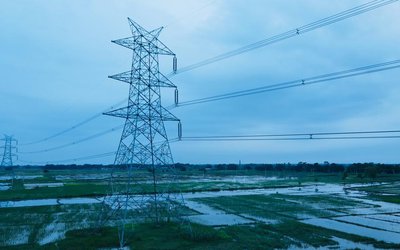Disaster Risk Reduction (DRR) has gained significant traction globally, particularly following major disasters that have highlighted vulnerabilities in communities and nations alike. The Sendai Framework for Disaster Risk Reduction (SFDRR), adopted in 2015, stands as a monumental milestone in this sector, shaping the approach to disaster management worldwide. This article explores the implications of the SFDRR for Nepal, the country’s strategic initiatives in DRR, the role of local planning, and the challenges that remain in the pursuit of resilient development.
The Sendai Framework for Disaster Risk Reduction: A Milestone in DRR
The Sendai Framework for Disaster Risk Reduction is a comprehensive global blueprint aimed at substantially reducing disaster risk and losses over the next decade. It emphasizes the need for a paradigm shift from reactive disaster response to proactive risk management. One of the core components of the SFDRR is its focus on understanding disaster risk, which includes identifying hazards, vulnerabilities, and exposure.
The SFDRR provides a strategic roadmap for countries to align their national policies with global standards, advancing cooperation and knowledge sharing. Its adoption marked a critical juncture for nations grappling with the increasing frequency and severity of disasters, underscoring the importance of a collective effort in managing risks effectively.
Nepal’s Commitment to the Sendai Framework
As a signatory to the SFDRR, Nepal is bound to adhere to its priorities and action plans. In line with this commitment, the country has developed its “National DRR Strategic Action Plan (2018-2030).” This plan, rooted in the principles of the SFDRR, represents a significant stride in Nepal’s disaster risk management journey.
The National Policy for DRR 2018 and the Strategic National Action Plan (2018-2030) provide a comprehensive framework that aligns with SFDRR’s goals. They emphasize the importance of integrating DRR into Nepal’s federal governance structure, thus allowing for localized, context-specific approaches to disaster risk management. The action plan outlines 32 targets, 18 major priority actions, and over 270 activities designed to bolster the country’s disaster response, risk reduction, and management capacities.
This new roadmap is built on lessons learned from past experiences, particularly the devastating 2015 Gorkha earthquake and subsequent flood events in 2014 and 2017. It emphasizes climate change adaptation and sustainable development, ensuring that Nepal's approach to DRR is both comprehensive and forward-thinking.
Provincial and Local Level DRR Planning
Another significant milestone in Nepal’s DRR efforts is the development of strategic action plans at the provincial and district levels. With support from the UNDP and the Comprehensive Disaster Risk Management Programme (CDRMP), all provinces and some of sampled districts such as Dolakha, Gorkha, and Sindhupalchowk have crafted tailored DRR plans that address local vulnerabilities. These localized plans are essential for ensuring that DRR strategies are not only top-down but also bottom-up, reflecting the unique challenges faced by different regions. By involving local authorities and communities in the planning process, these strategic action plans promote ownership and accountability, which are critical for successful implementation.
Legal and Institutional Framework for DRR
Nepal's progress in DRR is further accentuated by the enactment of the Disaster Risk Reduction and Management Act (2017), which marks a significant shift from a reactive to a proactive approach in disaster management. This act has strengthened legal frameworks, institutional capacities, and policy planning related to DRR. The Constitution of Nepal establishes a clear mandate for disaster risk reduction, outlining responsibilities across federal, provincial, and local governments. Schedule 7 assigns concurrent powers for disaster management to federal and provincial authorities, while Schedule 8 places primary responsibility for DRR with local governments. Schedule 9 encompasses disaster risk reduction as a concurrent power among all three tiers of government.
The establishment of the National Disaster Risk Reduction and Management Authority as a specialized agency signifies a commitment to cohesive and coordinated disaster management efforts. The legal framework is designed to empower local governments, enabling them to adopt risk-informed development practices and allocate resources efficiently for disaster preparedness and response.
Lessons from Recent Disasters
Nepal has faced numerous disasters within a decade, the 2015 Gorkha earthquake, floods and landslides in 2014, 2017, 2021, 2023, 2024, Jajarkot earthquake, strong windstorm "Tornado" at Bara & Parsa of 2019 that caused great loss of lives & properties. These events have stressed the urgent need for risk-informed development. In response, the government has initiated the preparation of several key plans: Hazard and Vulnerability-Based Disaster Preparedness and Response Plans (DPRP), Local Disaster and Climate Resilient Plans (LDRCP), Emergency Preparedness and Response Plans (EPRP) and alike others.
These plans are designed to provide a structured approach to disaster risk management, ensuring that local authorities are prepared to respond effectively to various disasters. They emphasize a proactive stance, integrating risk assessments into the planning process and enabling communities to become more resilient.
The Imperative of Local Level DRR Planning
Despite notable progress in DRR, significant challenges remain, particularly at the local level. Local authorities are in the process of developing and updating disaster risk reduction plans, including DPRPs, EPRPs, and LDRCPs, often with the technical and financial support of development agencies.
These plans should ideally reflect a comprehensive understanding of local hazards and vulnerabilities, detailing responsible stakeholders, resource availability, and potential impacts. However, recent responses, such as those observed during the Jajarkot earthquake, have highlighted a concerning trend: different agencies often operate in silos, leading to a lack of coordination and adherence to pre-established plans.
This emphasizes the importance of enhancing the capacities of local clusters and improving coordination mechanisms in DRR. Effective implementation of local DRR plans requires a collaborative approach, ensuring that all stakeholders are aligned and working toward common goals. The emphasis should not be on showcasing logos or brands but rather on building a robust framework that prioritizes real, grounded action. It is now time to assess the capacity and resource gaps, evaluate the relevance of the framework used by local authorities, and examine how disaster risk reduction (DRR) plans are implemented at the local level.
Conclusion: The Path Forward for DRR in Nepal
Nepal's journey toward effective disaster risk reduction is marked by significant milestones and achievements, particularly in light of the Sendai Framework’s guiding principles. The country's commitment to developing comprehensive policies, legal frameworks, and local action plans illustrates a strong resolve to enhance resilience against disasters.
However, as Nepal continues to navigate the complexities of disaster risk management, there remains a pressing need to focus on the implementation of local-level planning. Ensuring that DRR strategies are embedded in every tier of governments will be crucial for minimizing disaster risks and enhancing community resilience.
The lessons learned from past disasters must inform future actions, creating a culture of preparedness and proactive risk management. By enhancing collaboration among stakeholders and reinforcing the importance of coordinated responses, Nepal can pave the way for a resilient future, safeguarding the lives and livelihoods of its people against the backdrop of an increasingly uncertain climate.
- National Anticipatory Action Framework And Roadmap In Nepal: A Long-Awaited Leap In Nepal’s Disaster Risk Management
- Apr 15, 2025
- Localization: A Path To Socio-Economic Transformation In The Globalized World
- Mar 24, 2025
- Political Dimensions Of Localization In Humanitarian Discourse: Humanitarian Actions At Local By Regional Agencies
- Feb 11, 2025
- Sustainability In Development Projects: An Appraisal Of Nepal's Development Landscape
- Jan 19, 2025
- Saga of the Justice Reality: Work from Home with Remote Allowance
- Dec 05, 2024
















